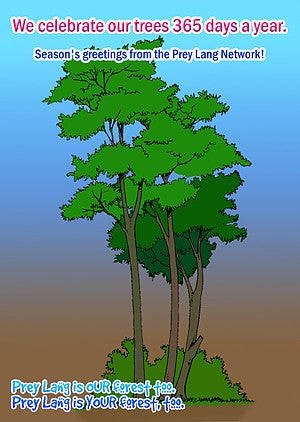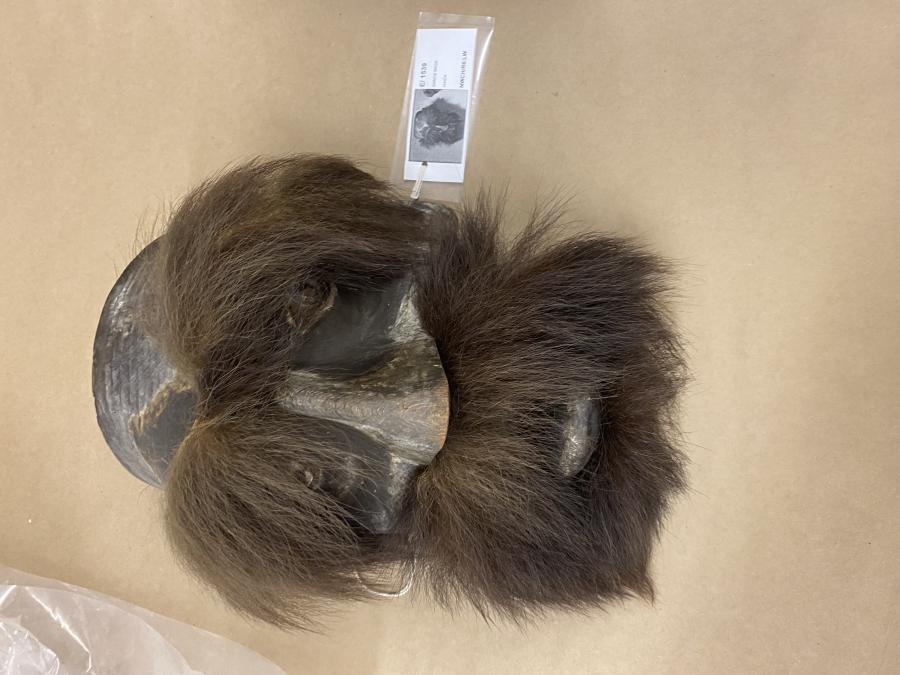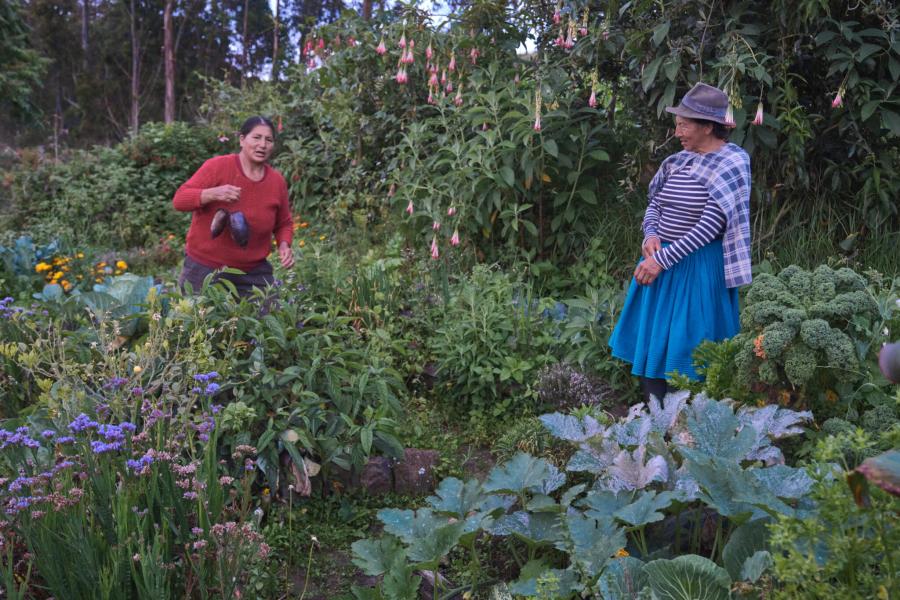Steven Keewatin Sanderson, a Plains Cree illustrator and animator, is one of the few Native comic book artists working anywhere. A self-taught artist, he has become a force to reckon with, having developed a number of comics with Native superheroes as well as producing his own animated films, working on hit cartoons for the Cartoon Network and Disney’s computer game Treasure Planet: Battle at Procyon. You might not have predicted that success from his early life, though. He grew up off-reserve in the urban environment of Saskatoon, Saskatchewan, and despite having excellent models in his mother, who is a professor at First Nations University, and his father, who is a blue-collar worker, Sanderson dropped out of high school. He says he dropped out because he was bored with the curriculum. Fortunately, he had a natural gift for artwork, and with his basic draftsmanship skills he was able to get positions with several animation companies, where he did on-the-job training in Photoshop and digital painting. Sanderson got his first professional job writing and illustrating comic books that were printed in multiple Native languages to encourage language skills. Later he enrolled in Vancouver Film School to study computer animation in a 10-month program that he completed in 2000. With that training under his belt, he landed a job as a storyboard artist for the popular animated television show ED, Edd n’ Eddy on the Cartoon Network. Since 2005 he has been writing and illustrating his own aboriginal comic books and has so far completed six of them. Sanderson has also ventured into animation filmmaking through various funding organizations, such as The Healthy Aboriginal Network, the Canada Council for the Arts, Health Canada, and the British Columbia Ministry of Health.
Fortunately, he had a natural gift for artwork, and with his basic draftsmanship skills he was able to get positions with several animation companies, where he did on-the-job training in Photoshop and digital painting. Sanderson got his first professional job writing and illustrating comic books that were printed in multiple Native languages to encourage language skills. Later he enrolled in Vancouver Film School to study computer animation in a 10-month program that he completed in 2000. With that training under his belt, he landed a job as a storyboard artist for the popular animated television show ED, Edd n’ Eddy on the Cartoon Network. Since 2005 he has been writing and illustrating his own aboriginal comic books and has so far completed six of them. Sanderson has also ventured into animation filmmaking through various funding organizations, such as The Healthy Aboriginal Network, the Canada Council for the Arts, Health Canada, and the British Columbia Ministry of Health.
Darkness Calls, his first venture, is a suicide-prevention comic book and animatic film. (Animatic films are made from comic strip stills in contrast to animation, which has a three-dimensional background and movable figures.) The story is about a teenager who is bullied at school, misunderstood by his teacher, and socially isolated from his family. He finds one particular day so overwhelming that he considers suicide—an epidemic problem in many Native communities. (Sanderson was inspired to write the story and to take on youth-oriented health and lifestyle projects by his own younger cousin, who had contemplated taking his own life.)
The first video of Darkness Calls is in the Gitxsan language from Northwest Canada; Sanderson also wants to make a Cree language version, as well as versions in other tribal languages. Another goal is to create an animation version of the film. The comic was funded by the Healthy Aboriginal Network, a nonprofit organization dedicated to promoting healthy life styles for youth.
Journey of the Healer, an animatic film funded by Health Canada, was created to attract First Nations youth to nursing careers in northern Canada, where there is a shortage of healthcare providers. The main character, a young girl, makes sacrifices to care for her dying grandmother. The theme revolves around the idea that sometimes a person has to leave home to help one’s tribal community. On a journey to find herbal medicine, the young girl encounters three spirits, who each give her a test of courage necessary for gathering the herbs. The three spirits are a wolf, a demon, and an old lady. The girl passes the tests by not showing fear when encountering the wolf and the demon and by assisting the elderly woman even though it delays the medicine gathering. In the end, the young girl finds the herbs to help her dying grandmother have a more peaceful transition to the spirit world. After the grandmother dies, the young woman is encouraged by her tribe to go away to nursing school and then return to heal tribal members.
Sanderson wanted the main character to pursue a medical career as a doctor, but the producers insisted on nursing because there are funds for training First Nations people in that field, and their goal is to provide nurses to work in northern Canada.
A few years ago, Sanderson was contacted by administrators at the Eiteljorg Museum of American Indians and Western Art in Indianapolis, Indiana, who were interested in a project about how Native Americans and First Nations people are portrayed in comic books. Sanderson was the only Native animation artist the museum staff could find on the Internet, and they invited him to participate on some conference panels in 2007. In 2009 he was invited back to the Eiteljorg as an artist in residence. At the museum he experimented with painting on canvas, and, in addition to working on art projects, he gave lectures to visiting school groups.
During his residency Sanderson was also invited by Purdue University’s Native American Educational and Cultural Center to give a lecture and show his films, which were very well received, generating questions from students studying fine arts and also Native American history. I was able to visit with Sanderson the following week at the Eiteljorg and observe his paintings on canvas, which is a new medium for him. I also got copies of his comic books, Just a Story, Level Up, An Invited Threat, and Darkness Calls. An Invited Threat is a diabetes-prevention story about a family’s realization that the food they are eating is unhealthy and how to make healthy decisions now, instead of waiting until it is too late. Level Up is a staying-in-school story about a potential dropout who visits his cousin, who is a game developer. The cousin helps him (and the readers) appreciate the importance of staying in school by comparing education to moving up a level in a video game.
This spring the National Museum of the American Indian mounted an exhibition dealing with Native American animation and comic book artists, and to complement the exhibition, the museum gift shop featured the book, Native Americans in Comic Books: A Critical Study, by Michael A. Sheyahshe. Sanderson is discussed at length in the book, which is largely complimentary of his work, but there is one point in which the author criticizes Sanderson’s film Darkness Calls. “One critique,” the author writes, “is the appearance of feathers and a breastplate in the hero’s costume. While modern accoutrements—armored boots, a souped-up motorcycle, and even a samurai sword—upgrade this costume, the feathers and breastplate seem to be a step backward.”
I asked Sanderson about this criticism and the difficulty of producing a character who is both credible as a superhero and identifiable as Native. “It’s always a delicate balancing act,” he said, “when depicting a minority character, especially in comic books. With comics you don’t have sound like in film and television to convey a character’s background. It’s trickier still with Aboriginal peoples, because for an average reader it’s easy to misconstrue the character as Hispanic. That’s why in comic books there was an emphasis on a Native character being not only red skinned in pigment when colored but also to have some sort of regalia to identify the character as Native. The most obvious thing is a feather, other things being breastplates, chokers, and leather fringes. These were the things I saw in comic books and in animated shows growing up as a child; even then I knew these were not the things an average Aboriginal person wore day to day, but I understood the idea of stereotyping visually to quickly convey to an audience that the person is an Indian. When it came time for me to do my character design I decided to pay homage to all these unintentionally offensive design attributes. I intentionally added things here and there from other stereotyped Native superheroes and characters, such as the bandit mask of Marvel Comics’ Warpath, the culturally incorrect face paint of Street Fighters’ T. Hawk, and the feathers of G.I. Joe’s Spirit Iron Knife and mashed them all together as my homage to them.”
“It’s somewhat funny to me,” he continued, “that some Aboriginal people can find my character offensive, because he was slightly designed to be, to challenge the audience to question why I did what I did. But the easy answer for me always is that the character is the product of a 16-year-old boy’s imagination and that the character is Cree. I am Cree, and Cree people wore feathers. The warriors wore breastplates and war paint, and if you find me honoring the history of my people as a step back, it makes me worry what those people’s idea of a step forward is.”
Sanderson’s own steps forward include plans to become more familiar with the work of other contemporary Native American and First Nations artists and filmmakers, to cross disciplinary boundaries, to become a filmmaker, and to make his work even more effective in helping Native communities.
Phoebe Farris (Powhatan) is the arts editor for Cultural Survival Quarterly. For more information on Steven Keewatin Sanderson, contact him at: Keewatin_427@yahoo.ca



